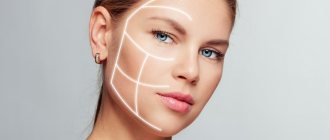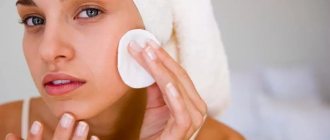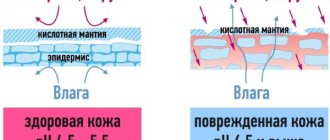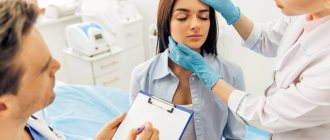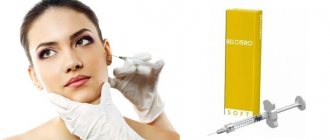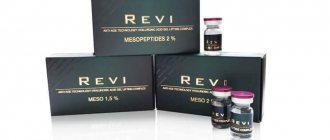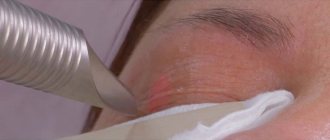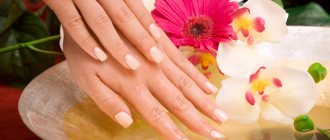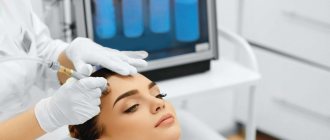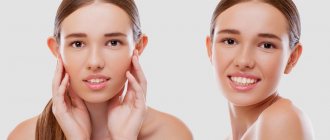The skin under the beard does not become super-strong, immune to the negative influences of the environment, even despite the presence of “armor” of hairs. On the contrary, it is vegetation that often becomes the source of problems: inflammation, rashes, suppuration, peeling, etc. Faced with these unpleasant phenomena, bearded men are faced with the question - what to do with a beard? Do I need to shave it off, can I just shorten it, or let it continue to grow? We searched and found answers to these and other questions, and are sharing them with you.
Types of disease
Currently, about four hundred different species of fungi are known that can be pathogenic to humans under certain conditions. Mycoses are classified according to the type of tissue affected:
- superficial, affecting the skin and mucous membranes:
- deep, the affected area is subcutaneous tissue;
- visceral, which parasitize the internal organs.
According to the types of fungi that parasitize humans, the most common diseases are the following.
- Rubrophytia. The fungus rubrum trichophyton affects the spaces between the toes, feet, and less often settles in skin folds and on the head. The skin at the site of the lesion turns red and peels, nodules and small bumps appear on it. When the skin of the body is affected, it forms large patches of reddened skin with bright red concentric ridges.
- Microsporia. As a rule, the fungus is transmitted from sick cats or dogs and affects vellus hair on the body, less often – the skin with the formation of a focus of inflamed skin with peeling and blisters, surrounded by a ridge. Microspores are resistant to external influences.
- Trichophytosis. The trichophyton fungus parasitizes the skin, affecting mainly exposed areas of the body - the face, hands. It is highly contagious. In humans, outbreaks of the disease are most often recorded in late summer and autumn during field work, when people come into contact with hay and straw that have been infected by sick rodents.
- Tinea versicolor. The most common cause of mycosis of smooth skin is Malassezia furfur. Lesions, as a rule, form on the chest and abdomen, less often on other parts of the body: small pink spots appear, the color of which then changes to yellow or brown. They are covered with coarse scales that look like bran. Multiple spots soon merge into large formations.
- Seborrheic dermatitis. This is a common mycosis of the scalp, affecting the scalp, including the skin of the eyebrows, eyelashes, mustache and beard, caused by Pityrosporum ovale. The variety Pityrosporum orbiculare parasitizes the smooth skin of the body. These are lipophilic fungi, the nutrient medium for which is sebum. The affected areas of the skin are marked by inflammation and flaky crusts.
- Candidiasis. Yeast-like Candida fungi settle in skin folds, on mucous membranes and form reddish spots covered with small blisters. After a while, eroded areas of bright red color appear in place of the bubbles.
There are many types of mycosis of the skin, subcutaneous tissues and internal organs, which are much less common than the listed types.
Symptoms
We can only talk about the symptoms of mycosis in general terms, since each type has its own manifestations, which can only be recognized by an experienced dermatologist. With skin lesions, as a rule, the following appear:
- reddened and flaky areas of skin;
- severe itching in areas affected by the fungus;
- diaper rash in skin folds and interdigital areas;
- small bubbles that burst and dry out after a while;
- white, yellow or brownish crusts over inflamed skin.
With mycosis of the extremities, as a rule, the nails also suffer - they become brittle, split, then gradually become cloudy and darken.
Deep mycoses, as a rule, occur with the formation of deep ulcers, purulent inflammations, fistulas, etc. They are most common in countries with hot climates, and in Russia they are extremely rare. Visceral, depending on the location and degree of damage, can cause dysfunction of organs on which fungi parasitize - pulmonary diseases, digestive disorders, etc.
Are you experiencing symptoms of mycosis?
Only a doctor can accurately diagnose the disease. Don't delay your consultation - call
How to avoid
When dandruff is a thing of the past, try to do everything to avoid the recurrence of the unpleasant problem. One of the keys to success is proper shaving: the blade must be sharp enough to glide easily over the skin and not leave microtraumas or abrasions. Remember to use plenty of shaving foam or gel. A modern razor, for example, Dorco Pace 6, has six sharp blades that can handle any soft or hard stubble. This machine can be used daily without harm to the skin. The rotating head completely follows the contours of the face, allowing you to reach hard-to-reach places - so shaving will be quick and comfortable.
And, of course, don't forget about simple self-care measures. The key to the beauty of your beard is proper nutrition, a normal daily routine and giving up bad habits. When beauty rituals become a habit, it will not damage your masculinity - on the contrary, a stylish man who knows his worth looks much better!
Reasons for the development of pathology
The main cause of mycosis is infection with a pathogenic fungus. At the same time, many types of fungi are constantly present in the body, and their growth is usually inhibited by the immune system. As control decreases, the fungus begins to grow on the skin or tissues of internal organs. This often happens due to:
- a chronic disease that weakens the body;
- non-compliance with hygiene rules;
- insufficient or unbalanced nutrition;
- smoking and alcohol abuse;
- exposure to external factors that weaken the body - hypothermia, excess ultraviolet radiation, poisoning, radiation damage, etc.;
- long-term use of antibiotics or certain other medications.
The only exception here is the so-called mycosis fungoides, which is not a fungal disease. This is an oncological tumor pathology, which is based on the degeneration of T-lymphocytes into a malignant form.
Transmission routes
There are many ways to become infected with fungal diseases. Most often this happens:
- in direct contact with the affected areas of the skin of another person;
- when sharing towels, slippers, personal hygiene items;
- through a contaminated manicure instrument;
- through contaminated clothing and shoes;
- through the soil, especially in the presence of skin microtraumas;
- in contact with pets.
Often, skin mycoses develop in people who visit swimming pools, saunas, showers at sports clubs, etc. Infection is more likely the worse the person’s immune system works.
Diagnostic methods
As part of the diagnosis of mycoses, studies of scrapings of skin and nail formations, sputum, blood, hair, scrapings of mucous membranes, feces and other biomaterials can be performed, depending on the type and location of the lesion. For skin diseases, the following is usually performed:
- dermatoscopy - examination of affected areas of skin, hair or nails to identify characteristic signs;
- microscopic examination of scrapings to detect fungal mycelium;
- bacterial culture on nutrient media, which allows you to identify not only the type of fungi, but also the optimal drug for treatment;
- serological blood test;
- PCR test to detect the fungal genome.
Some types of fungi are quite easily diagnosed using UV radiation, which is generated using a Wood's lamp.
Simultaneously with determining the type of fungus, the patient undergoes a general examination to identify the cause of weakened immunity that led to infection.
Recommendations from cosmetologists
To prevent red spots on the chin from bothering you, cosmetologists recommend:
- Do not use antibacterial soap for washing, which causes dryness and tightness of the skin. It is being replaced by a cleansing gel without propylene glycol and sodium lauryl sulfate;
- If the skin itches, cosmetic oil based on flax seeds will help (it will help eliminate red spots on the chin and soften areas that are flaking);
- Apply day cream with oil components daily. When choosing a cream, it is important to consider the time of year and choose a protective agent against low or, conversely, high temperatures. The cream will create a protective film and prevent moisture from evaporating.
Did you know? Ordinary liquid honey, diluted with a small amount of warm water, will soften the face and eliminate flaking. It is enough to massage the skin with your fingertips and wash with clean water.
Treatment
Currently, there are many means and techniques for treating mycosis of almost all types. The main method is drug therapy, which includes general drugs and local agents, which are selected depending on the type of fungus, the degree of damage, the duration of the disease, the patient’s health status and other factors. Mycoses of the skin and mucous membranes are best treated: if you follow the doctor’s recommendations, you can get rid of the disease within two to three weeks, and sometimes in just a few days.
If nails are affected, the course of therapy lasts several months, and combination treatment is required: local drugs are combined with systemic agents. Local dosage forms are extremely varied: these are creams, ointments, gels, sprays, nail polishes, powders, drops. Systemic antimycotics are usually available in the form of tablets or capsules. In some cases, complete removal of the affected nail is required.
When choosing medications, the dermatologist must take into account the individual sensitivity of the pathogen to a particular drug. Independent use of certain drugs often does not bring the desired result, since before starting treatment it is necessary to determine the type of causative agent of the disease. For certain fungal infections, the patient’s diet becomes important. So, during the treatment of yeast and mold fungi, it is necessary to exclude foods that contain fast carbohydrates (sweets, flour products), fermented foods, alcohol and potatoes.
The skin on the chin turns red and peels. How to eliminate peeling skin?
Red spots on the chin require immediate medical attention. But greater effect can be achieved with an integrated approach to solving this problem. For this purpose, medications, cosmetic procedures and home recipes are used.
Cosmetic procedures
If the cause of redness and peeling on the chin is not a dermatological disease, special procedures will solve the problem. Their goal is to moisturize the epithelium and cleanse dead cells.
- Mesotherapy. The method is based on subcutaneous injections of hyaluronic acid and various meso-cocktails. The procedure will not only relieve the existing syndrome, but also rejuvenate the skin. The technique is good with a minimal list of contraindications and the ability to select any drug.
- Peeling. Chemical cleansing of the face (and body) using fruit and lactic acids. Not suitable for thin and sensitive skin. However, those who are recommended for this procedure can be confident in the quick and painless cleansing of problem areas.
- Biorevitalization. A procedure similar to mesotherapy, which also involves the injection of medications. It is characterized by localized action and the introduction of nucleotides and other biologically active substances.
- Complex techniques for enhanced skin hydration. Facial treatment involves the use of several intensive products at once: tonics, gels, concentrates with active moisturizers (amino acids, enzymes, alginates.
Pharmacy products
When dry skin on the chin is caused by internal causes, medications are prescribed to eliminate the provoking factor. In the fight against dermatitis, regular use of such products is often sufficient. The most effective of them:
- "Lokoid", "Hydrocortisone", "Cortiderm" are corticosteroids used to treat non-infectious diseases. Antibiotic additives of these ointments actively affect the foci of the disease, preventing the development of peeling, and reduce the functioning of the sebaceous glands;
- "Triderm", "Triacutan" - combined ointments based on corticosteroids with the addition of antibacterial additives;
- “Bepanten” - heals cracks and wounds, moisturizes, relieves irritation;
- "Lactofiltrum" - used as an addition to antihistamines. Its main role is to remove toxins;
- "Aquaphor" is a humidifier based on petrolatum. For treatment, you need to cover your chin with a thick layer and do not wash it off. Course of therapy – 14 days;
- "Dexpanthenol" - an anti-inflammatory cream promotes active cell regeneration and accelerates cellular metabolism. Removes red dots on the chin; if there is severe peeling, you can apply it several times a day until a positive effect appears.
Also, pharmaceutical preparations such as zinc ointment, “Losterin”, “Ekolom”, “Gista N”, “Radevit” have proven themselves.
Attention! The body gets used to most anti-allergy medications, which is why their effect weakens. Therefore, after 2 weeks of treatment, it is recommended to change the drug.
We use folk recipes
You can get rid of redness and peeling of the chin at home. Proven folk remedies will help with this:
- Lotions. A cloth or cotton pad is moistened in a strong herbal decoction (with chamomile, string, calendula) and applied to the chin for 15 minutes. You can repeat the procedure up to 5 times a day;
- Compresses. Honey, onion juice and flaxseed oil have proven themselves well. Heat the butter and honey in equal proportions over low heat, add onion juice (1:4). The cloth is moistened and applied to the affected area for 15-20 minutes 3-4 times a day. Other oils are also suitable for this procedure: olive, almond, amaranth, as well as essential oils (lavender, rose, neroli);
- Lotions. Chamomile and green tea have proven themselves as soothing and anti-inflammatory agents. Just pour boiling water over the dried flowers and let it brew for 30 minutes. in a closed container and wipe the flaky and reddened chin;
- Masks. Nourishing mask of 2 yolks, 0.5 tbsp. l. honey and 2 tbsp. l. vegetable oil is slightly heated and warmly applied to the face. After rinsing, apply a nourishing or moisturizing cream. To prepare masks, use cottage cheese, sour cream, and potatoes.
- Scrubs. Ground rolled oats with honey, egg yolk and olive oil are mixed and a homogeneous mass is applied with massage movements, after 10-15 minutes, washed off with warm water. You can remove peeling using salt, soda, and egg-nut scrubs.
